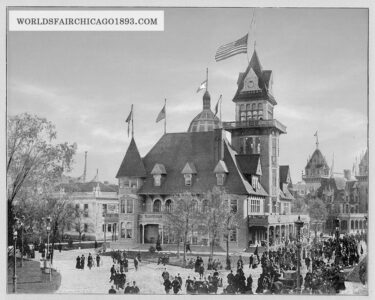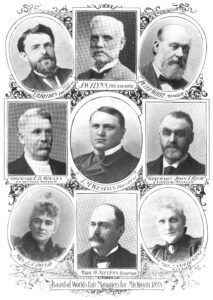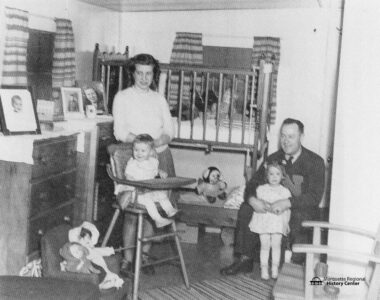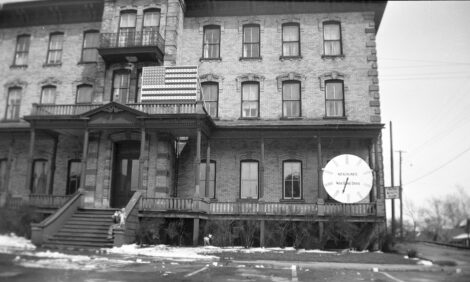Marquette at the 1893 World’s Fair, part 1
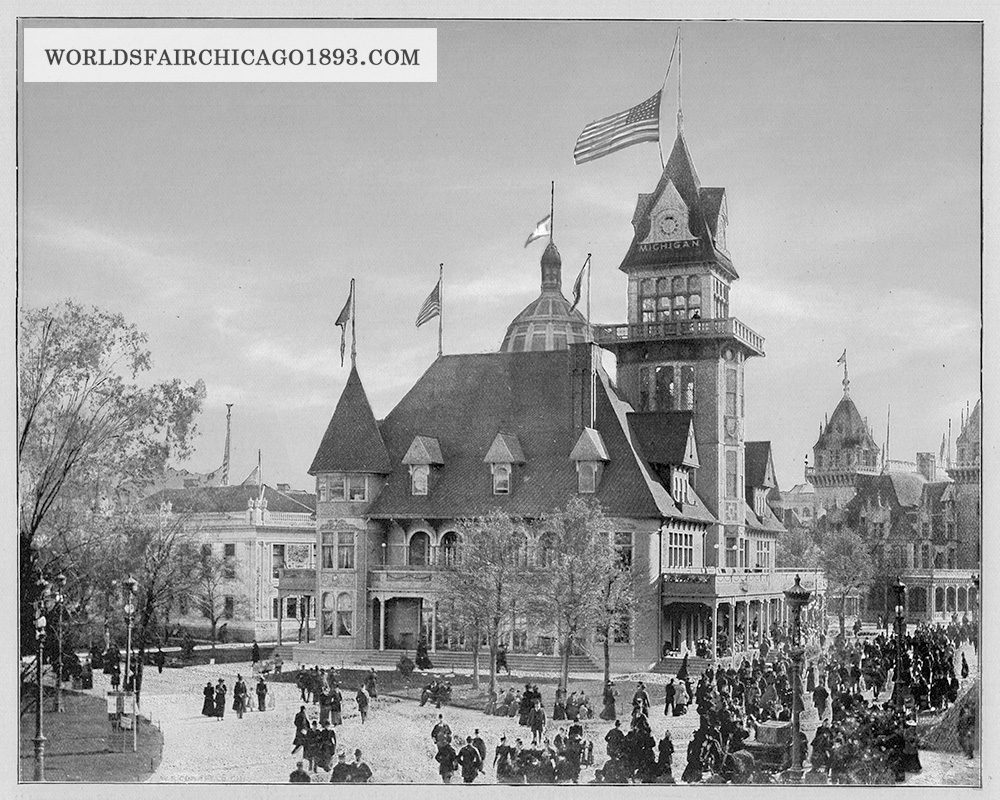
The Michigan Building at the Chicago World's Fair. (Photo courtesy of worldsfairchicago1893.com. via the Marquette Regional History Center)
MARQUETTE — “The Creator might have made a better state than Michigan, but He never did.”
These were the opening words of the Report of the Board of World’s Fair Managers of the State of Michigan, reporting on Michigan’s contributions to the Columbian Exposition of 1893. Marquette’s Peter White was one of the six members of Michigan’s World’s Fair Board of Managers, and, most likely, the author of these lovely words that began the Board’s report.
The Columbian Exposition was held in Chicago during the summer of 1893. It was at that time by far the biggest and grandest World’s Fair that had ever been held. More than 27 million people visited the fair during the six months it was open. Among other things, the event gave us the Ferris wheel, the first commercial movie theater, the “city beautiful” movement, the first moving walkway, the first picture postcards, the reference to “alabaster cities” in the song America the Beautiful, and, lest we be too high-minded, the hootchy-kootchy (a sexually provocative belly dance).
In July 1891, the state legislature appropriated $100,000 to promote Michigan at the exposition. The bill empowered the governor to appoint six individuals, including two women, to a board of managers that would organize Michigan’s efforts. The efforts included not only constructing and furnishing a Michigan building at the fair, but also developing the Michigan exhibits in other areas, including the agriculture, mining, manufacturing, and forestry buildings.
Peter White was not one of the original six managers appointed by Gov. Winans. The original six included W.R. Burt, from Saginaw, but he resigned less than a month later. After an August 1891 visit to the Upper Peninsula, the governor appointed James R. Cooper, from South Lake Linden, to replace Burt, but by early November, Cooper had also resigned.

The Board of World's Fair Managers for Michigan, 1893, from the committee's published report. (Photo courtesy of the Marquette Regional History Center)
White, who had accompanied the governor on his August U.P. trip, was officially selected on Dec. 24 and this time the appointment stuck. White was assigned to supervise the exhibits in “Mines, Minerals and Mining, including iron, copper, salt, building stone, mining machinery and methods; electrical exhibits; civil engineering and architecture; Indians and historic archeology.”
The first meeting White attended, in January 1892, was perhaps the most contentious. The board president estimated that the exhibits would require at least $250,000 but the board only had $100,000 to work with, and, as White pointed out, $25,000 of that was already committed to building the state building, leaving just $75,000 to distribute.
Some of the managers, including White, believed they could raise additional money from the industries they represented, but others, especially the fruit growers, were adamant that they needed more money. The fruit growers asked if they could have the $3,000 allocated to the fisheries exhibit, while the head of the state fish commission insisted that they would need at least $15,000 for a first-class exhibit and, in any event, could not accept less than $9,000.
Meanwhile, the manager in charge of building the Michigan building at the fair bemoaned that the “extraordinary” cost of construction in Chicago meant that the $25,000 allotted was not enough to build a building “creditable to the state.” Ultimately it was White who made the final motion allocating the available money.
The Board of Managers wisely chose to hold the July quarterly meeting in Marquette. The Mining Journal reported on the two long sessions held on the 12th, which resulted in various reallocations of funds, including $3,000 from the fisheries department going to the agricultural committee after all. The committee also heard and approved an application from the ladies’ committee of Sault Ste. Marie to provide an exhibit of the Indian women for the Michigan building.
The newspaper reported that after driving around the city with Peter White, I.M. Weston, president of the Board of Managers, said, “I certainly think Marquette, considering the great natural beauty of its surroundings, its elegant residences, fine lawns and handsome business blocks, [is] the most beautiful city in the state of Michigan.”
In addition to soliciting funds from the mining companies, White and his local collaborators also solicited samples of rocks and minerals from both companies and individual collectors. The final report of the Board of Managers reported that they received and displayed more than 350 different specimens from 25 different collectors.
This was in addition to the 82 “economic specimens” received from the mining companies and the Michigan Mine School (now Michigan Technological University). Those specimens included everything from multiple masses of copper, weighing up to four tons each, samples of copper wire, a model of the Cleveland Cliffs mine, and a wooden model of the DSS&A No. 4 Ore Dock at Marquette, plus numerous photographs and drawings.
The state eventually increased the committee’s appropriation to $250,000 and the Michigan building was dedicated on April 29, 1893, just a few days before the fair officially opened on May 2. Peter White was in charge of the arrangements for the dedication.
Three trains of sleeper cars filled with the entire legislature and numerous state officials came from Lansing for the dedication, joined by a private car of “distinguished Detroit gentlemen.” Bunting was hung, flags were unfurled, a brisk fire was laid in the large rotunda, and a Lansing orchestra played “delightful strains of music.” After the dignitaries made their way in a stream of carriages to the new building and were seated on the stage, Peter White introduced President Weston, who then officially delivered the building to Michigan Gov. John Rich.
House Speaker Tatum delivered the last speech, concluding, “Proud of our State, her people, her institutions and her material prosperity, we as her children join in the song:
Home of my heart, I sing of thee-
Michigan, my Michigan !
Thy rock – bound shores I love to see-
Michigan, my Michigan !
From Saginaw’s tall whispering pines
To Lake Superior’s farthest mines
Bright in the light of mem’ry shines
Michigan, my Michigan!
- The Michigan Building at the Chicago World’s Fair. (Photo courtesy of worldsfairchicago1893.com. via the Marquette Regional History Center)
- The Board of World’s Fair Managers for Michigan, 1893, from the committee’s published report. (Photo courtesy of the Marquette Regional History Center)
Next week’s article will discuss Michigan’s spectacular exhibit in the Mines and Mining Building and a decidedly rowdy trip by the entire Marquette city commission to the fair.

